Plants are natural air purifiers.
Aside from producing oxygen, they also absorb and filter pollutants present in the air.
They are also proven to boost people’s mood, productivity, creativity, and concentration.
However, like our beloved pets, plants need attention and proper care.
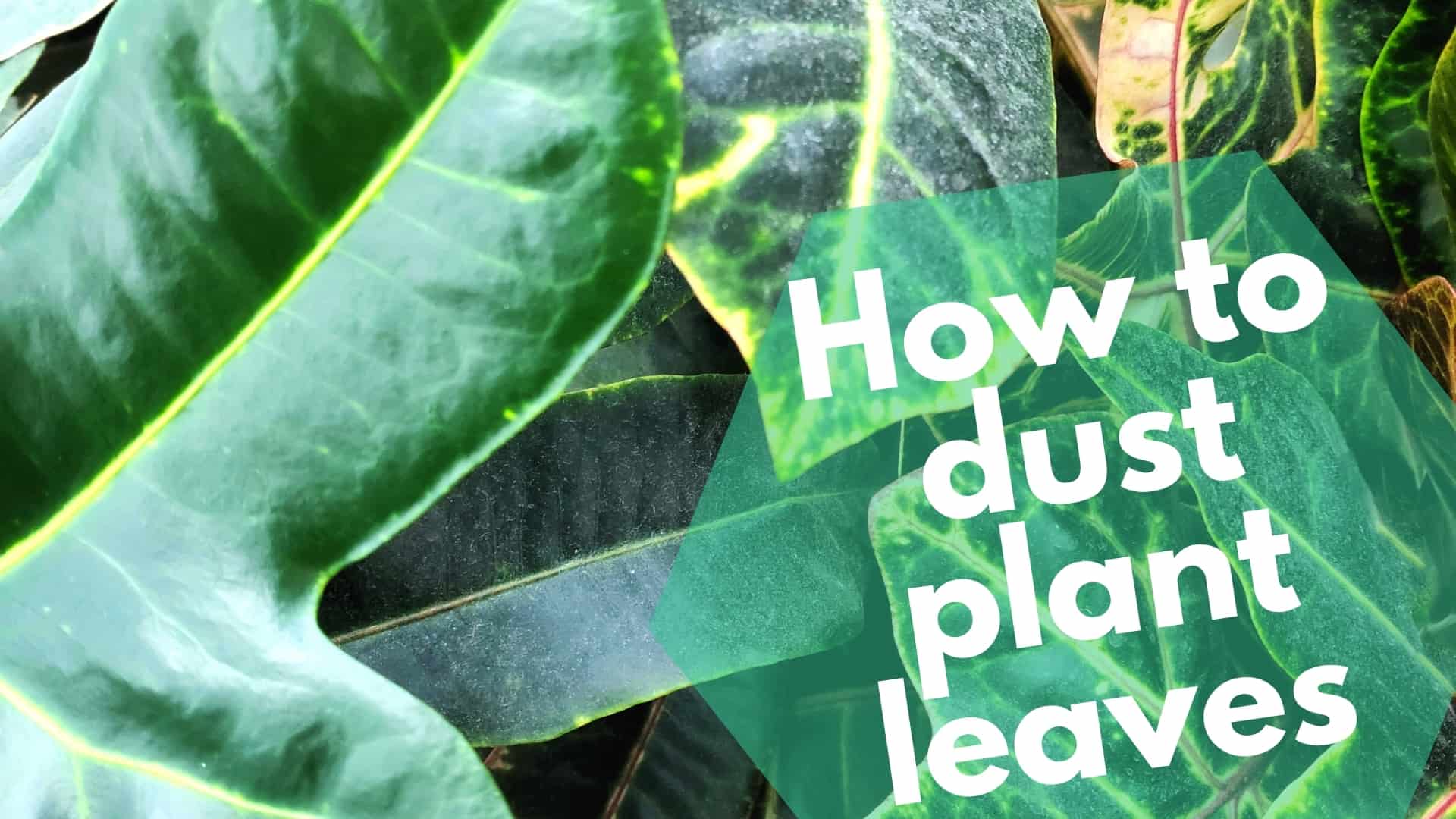
If you already own several houseplants, you probably know by now how easily dust can accumulate on their leaves.
In this post we'll cover:
Should You Dust Plant Leaves?
YES! Just like everything else in your home, dust can also settle on plant leaves.
Dust and dirt are not just bad for your health, it can also affect your plants negatively.
Dust can block sunlight and clog the pores of your indoor plants, which can slow the process of photosynthesis.
If your houseplants are not getting enough sunlight, it could affect their growth and make them more susceptible to illness and other issues.
How Frequent Should You Dust Your Plants?
The frequency of dusting plant leaves will depend on how much dust is present in your air.
If you live right next to a dirt road or construction site, your surrounding air is probably teeming with dust and other pollutants.
The fastest way to know if your plant needs dusting is by rubbing your fingers on their leaves.
If the dust accumulation is more than you can blow off the leaves, then it is time to do some dusting.
How to Dust Plant Leaves: 4 Proven and Effective Ways
1. Wiping
Houseplants like fiddle leaf fig, elephant ear, rubber plant, and croton are popular for their oversized leaves.
You can easily wipe the dust off their leaves using damp microfiber cloths like the MR. SIGA Microfiber Cloth.
Remember the following when wiping your houseplants:
- Use lukewarm water since cold water may leave unsightly spots.
- Support each leaf with one hand and wipe the dust gently away from the stem.
- Do not forget to wipe the undersides of your plant.
2. Showering
Showering is the best option for plants that are difficult to wipe.
You may also resort to showering your plants if the dust accumulation is so thick that wiping no longer works.
Here is what you should do:
- Use lukewarm water.
- Run your hands through your plant’s leaves while showering it.
- Hold your plant in different angles to ensure that the shower will hit the undersides of the leaves.
- Let the water drip and do not shake your plant.
You may pat dry the leaves or let your houseplant drip-dry under the sun.
For small houseplants or succulents like anthuriums, Chinese evergreens, peace lilies, peperomia, lithops, and cast-iron plants, you can shower them under the sink using a spray head.
If your houseplants are too big for the sink, you can clean them in your shower room.
One advantage of doing this is that you can shower multiple plants at the same time.
3. Brushing or Feather Dusting
If the dust on the surface of your houseplants is not that thick, you may remove it by using a soft-bristle paintbrush or feather duster like the GM Ostrich Feather Duster.
Just brush the dust off starting from the base going to the tip of the leaf.
Do not apply too much pressure, especially if you are dusting plants with delicate leaves, as it might scratch or damage them.
Also, avoid sprinkling your dusty plants with water before brushing or feather dusting them to prevent clumps of mud from adhering to the leaves.
4. Misting
Now, there are houseplants that are a bit challenging to dust. You cannot just simply shower or wipe them with cloth.
For instance, plants like bonsai and pachypodium are sensitive to the overwatering that could occur if you shower them.
On the other hand, some cacti like the old lady cactus have hairs and spines, which make it impossible to wipe or feather-dust them.
You can remove the dust and dirt off these kinds of plants by misting them.
Most misters have adjustable spray nozzles, so you can switch between mist and stream.
How Can I Make Plant Leaves Shine?
Most houseplants tend to look dull overtime, even if you regularly dust and clean their leaves.
This is natural, and as along as the leaves of your plants are not turning to yellow or brown, they are perfectly fine.
You can just leave your plants looking like that in the corner of your home, but admit it or not, they look unattractive.
However, by using some plant-friendly and organic shine products, you can restore the natural beauty and vibrance of your plants’ leaves.
Here are some leaf shine and cleaning products that you can try to keep you plant leaves dust-free and shiny:
Leaf Shine Products
Just a quick reminder, using leaf shine products on your plants are only optional.
There are hundreds of commercial products that you can purchase and use.
However, I highly recommend that before you try one, make sure that you read customer reviews and conduct thorough research about the efficacy of the product.
We’ve done that with this Miracle-Gro Leaf Shine which is amazing:
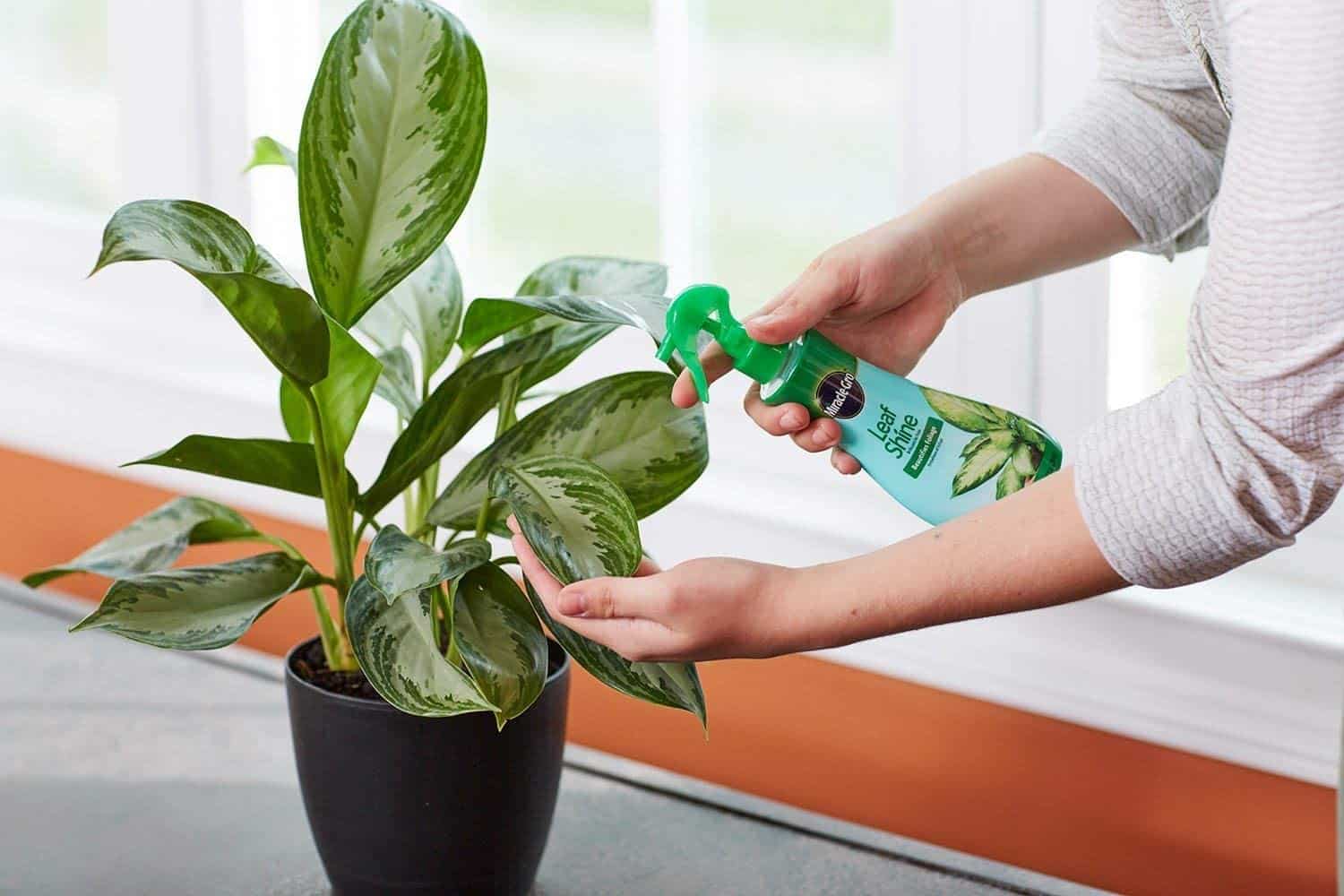
Miracle-Gro Leaf Shine not only restores the shiny look of houseplants, it is also good for removing dust and dirt.
This leaf shine product is water-based and only contains mineral oil.
Miracle-Gro Leaf Shine also does not clog pores and is odorless, so you will not have to worry about any unwanted smell coming from your plants.
The other product you could use is the Green Glo Plant Polish:

Green Glo Plant Polish is a go-to leaf shine product for anyone who does not want to spend time wiping his/her plant leaves off.
All you have to do is spray it on the leaves of your plants – no wiping required.
Green Glo Plant Polish can remove water spots and calcium deposits on the surface of plant leaves. After spraying, it leaves a shiny layer that can keep dust away.
It also reduces water evaporation, which can prolong the life of your houseplants.
The last one that’s with considering is the Chrysal Leaf Shine Spray:

Chrysal Leaf Shine Spray is another “no wipe” leaf shine spray that you can use safely on your plants. It works well with all kinds of houseplants.
Chrysal Leaf Shine Spray can give your plant leaves a natural gloss look.
Not only that, it also adds a protective layer that will prevent dust from settling.
Its effect could last for up to four weeks.
Leaf Cleaning and Dusting Products
Aside from the ones I mentioned earlier, here are additional cleaning and dusting products that you can use on your beloved houseplants.
Misters
This Beautify Beauties Flairosol Hair Spray Bottle water mister dispenses consistent aerosol-like spray, which is perfect for sensitive plants:
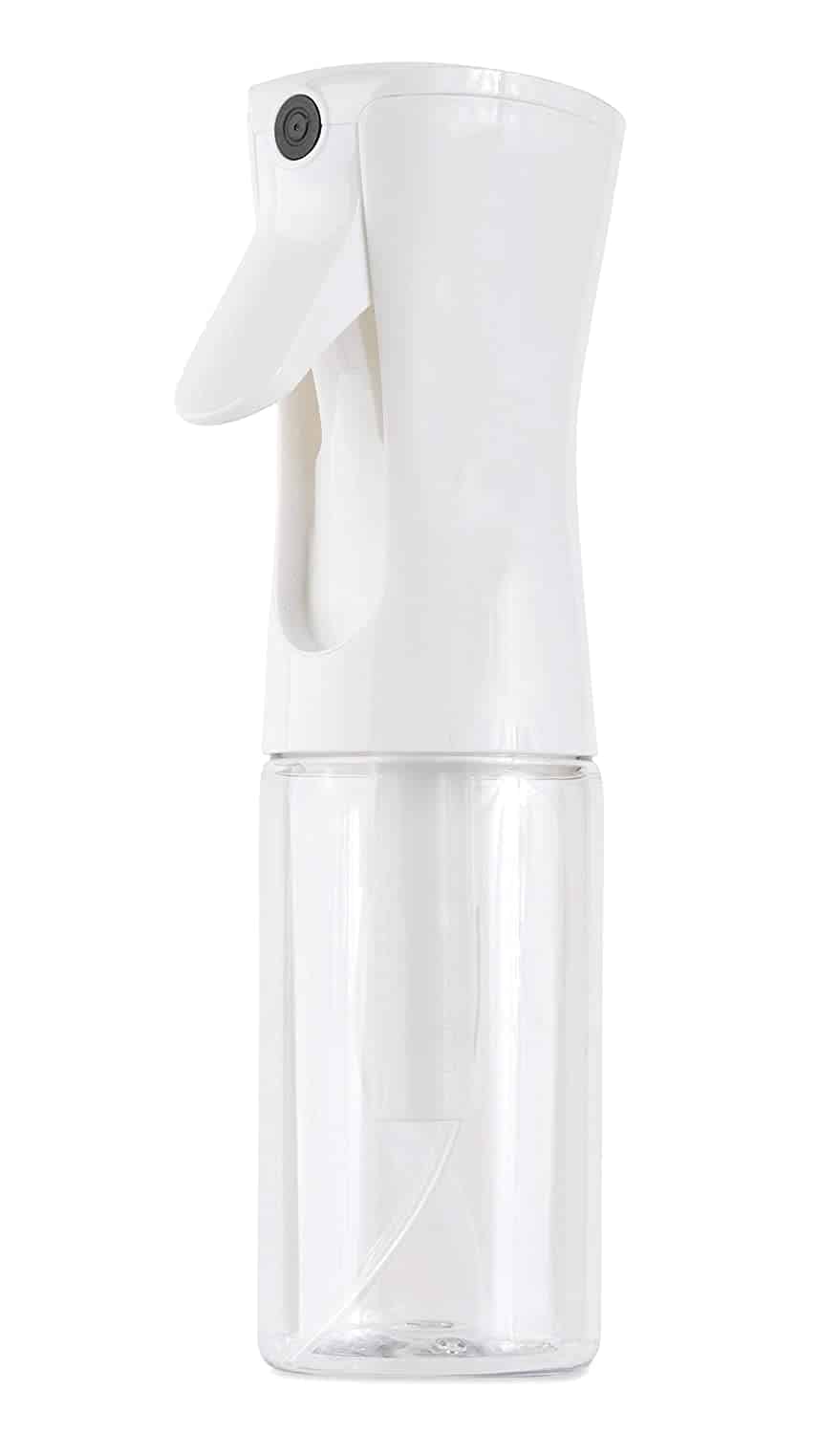
Its soft-squeeze trigger delivers a burst of fine mist.
Also, its easy-to-grip design can reduce hand fatigue, so you can you clean and water your plants as often as you like.
A little less practical in my opinion, but one that you can leave out in your home because it’s just so gorgeous is this OFFIDIX Transparent Glass Watering Spray Bottle:
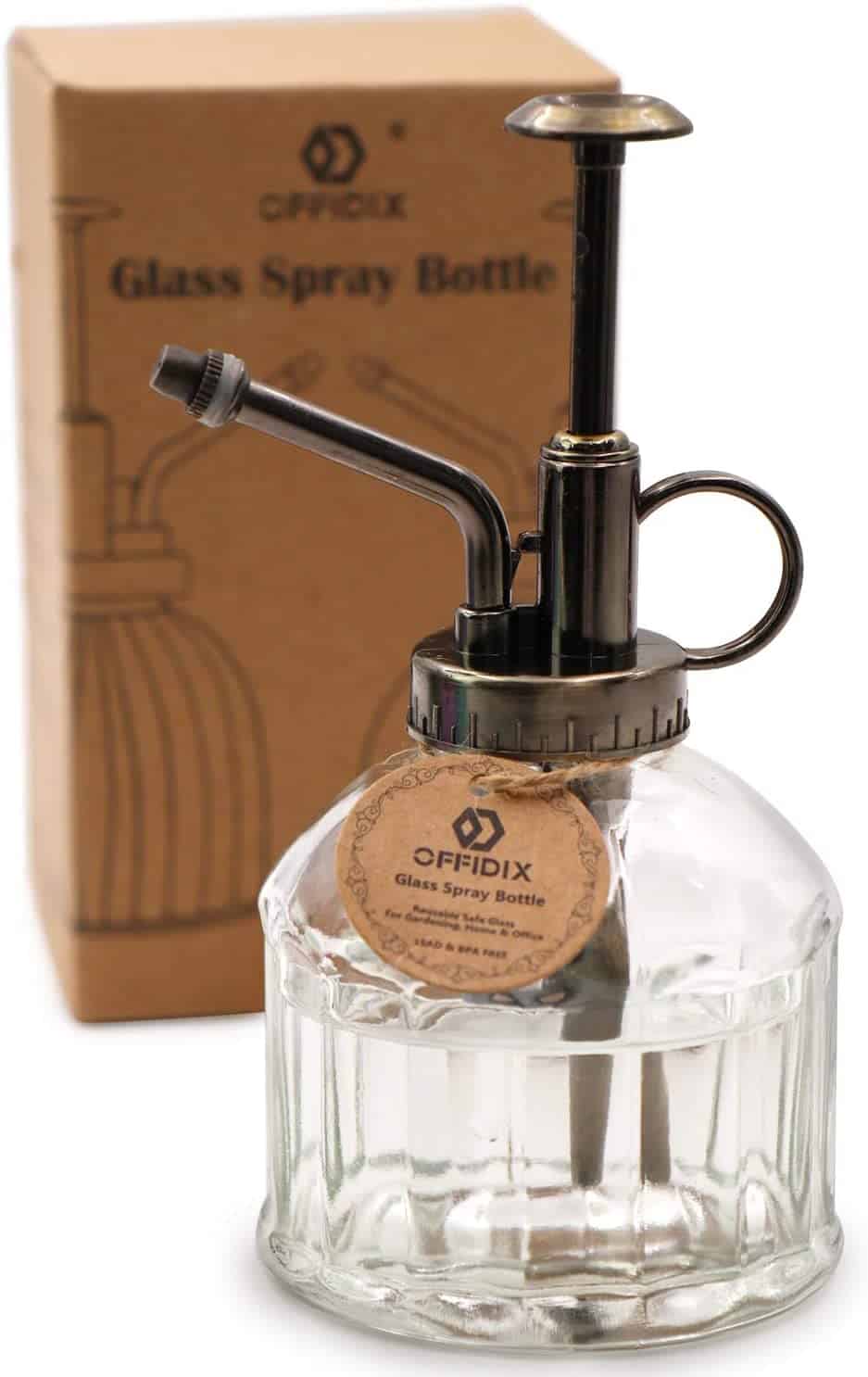
This transparent glass plant mister is good for succulents, orchids, and other delicate indoor plants.
It is small and handy, so you can use it conveniently anytime.
If you live in a hot, dry place, which requires you to regularly clean and water your houseplants, this is the perfect mister for you.
Brush and Feather Dusters
Presa Premium Paint Brushes Set
You can use any soft-bristle brush on your plant leaves.
But if you have a variety of houseplants in your home, you can get the 5-piece Presa Premium Paint Brush set.
The set comes with five different brushes that you can use on a variety plants – from succulents to big ones like the fiddle leaf plant.
Another way to go is with the Midoneat Natural Black Ostrich Feather Duster:
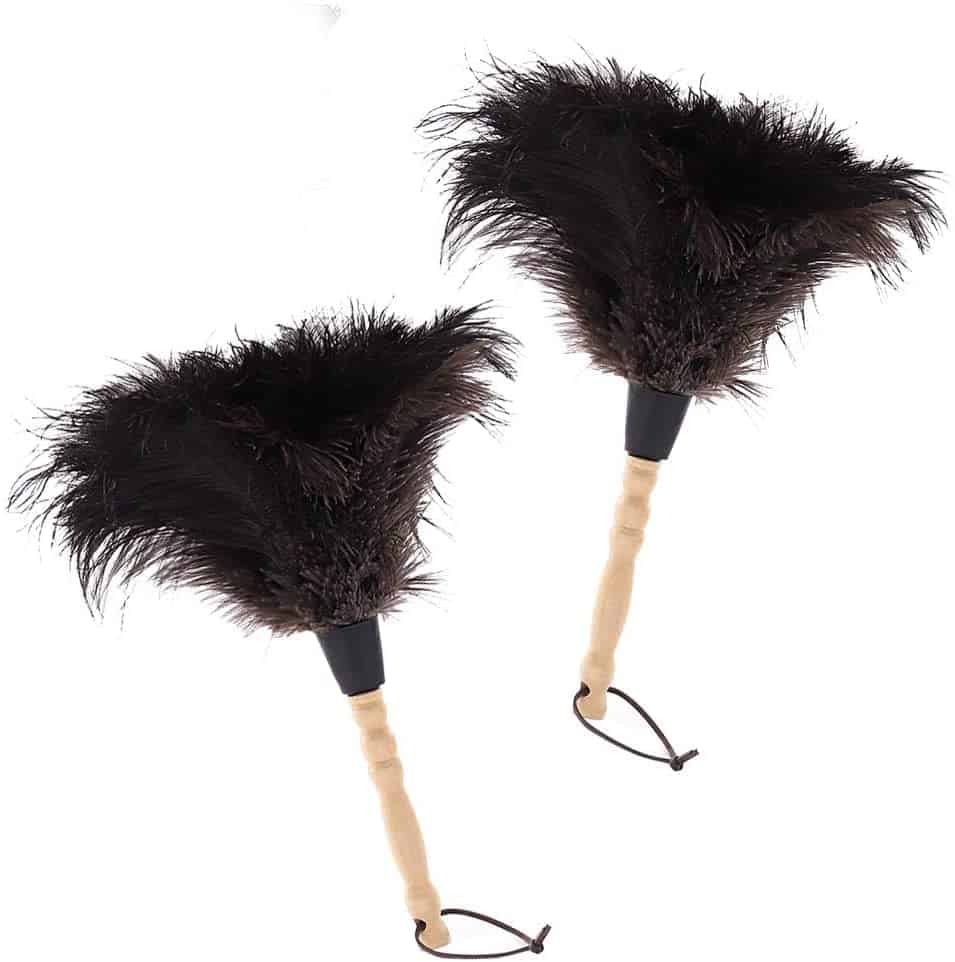
This soft and fluffy black ostrich feather duster is perfect for dusting your houseplants. You can easily get it between leaves and other hard-to-reach areas of your plants.
Key Takeaways when Dusting Plants
Treat your plants the same way you treat your pets.
Ensure that they remain healthy and beautiful by watering them regularly and keeping their leaves free of dust.
Remember, dust can affect the health of your plants. It can clog their pores, which can lead to stunted growth or discoloration.
Here are some important pointers that you should remember before/when dusting your plant leaves:
The right care for the right plant
Know what dusting or cleaning method is suitable for your houseplants.
For instance, if your plant is sensitive to overwatering, do not shower it.
If your plant’s leaves have spines, do not wipe them with cloth or use feather dusters.
Lukewarm water
Use lukewarm water when showering or rinsing your plants.
Clean or dust regularly
If you live in a dry and dusty area, clean or dust your plant leaves regularly.
Products are optional
Using leaf shine or polishing products are only optional.
If you want to use one, make sure that you do proper research about the product before applying it on your plants.
Be gentle to your plants
Always handle plant leaves gently. Leaves are, by nature, delicate and sensitive.
Apply too much pressure and you might scratch their surface or tear them apart.
Don’t shake
Do not shake your plants after misting, rinsing, or showering them.
Let the water drip naturally then pat dry them or leave them under the sun for a few minutes to drip-dry.
Are you ready to give your plants some TLC?
Have some glass that needs dusting too? Check out my guide on dusting glass
I'm Joost Nusselder, the founder of Tools Doctor, content marketer, and dad. I love trying out new equipment, and together with my team I've been creating in-depth blog articles since 2016 to help loyal readers with tools & crafting tips.

